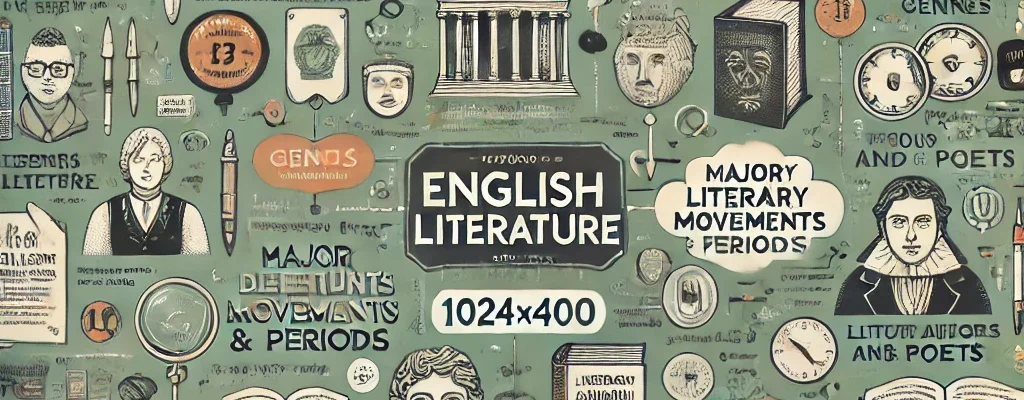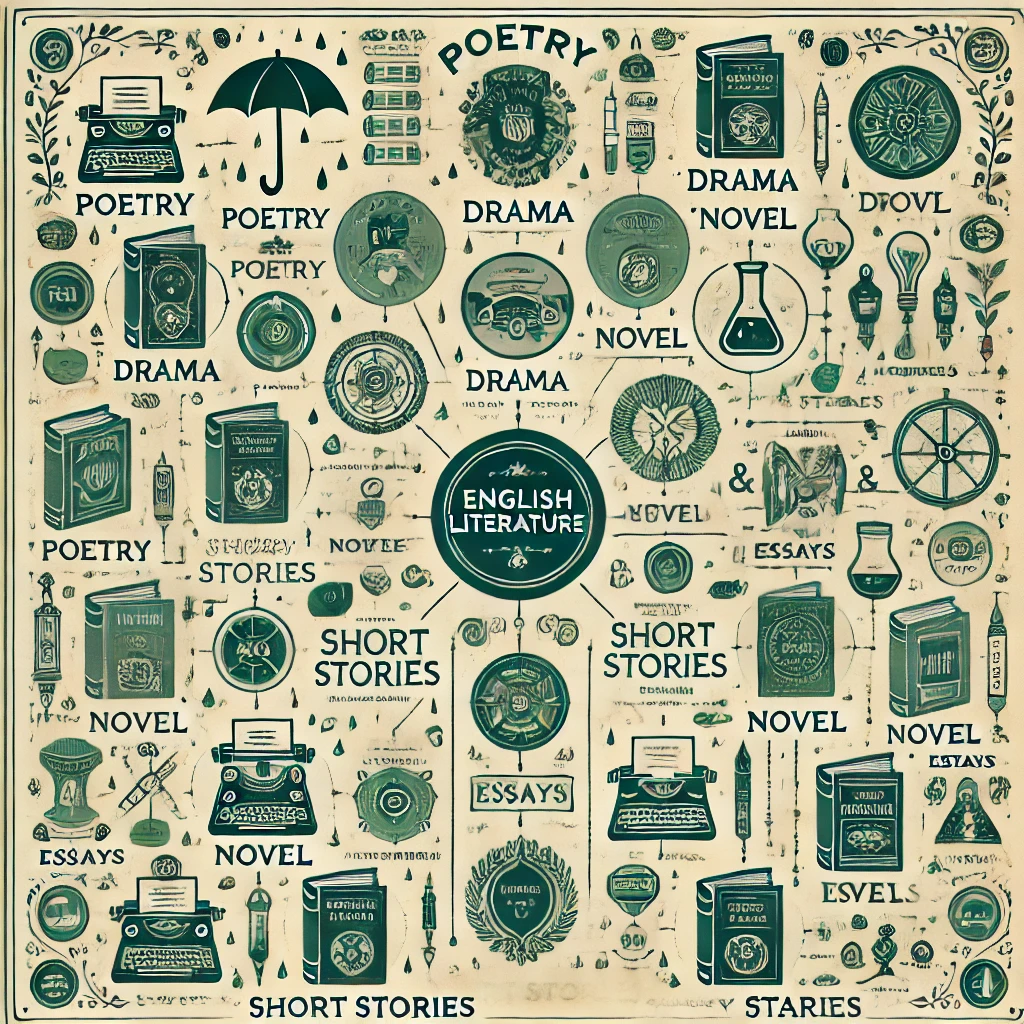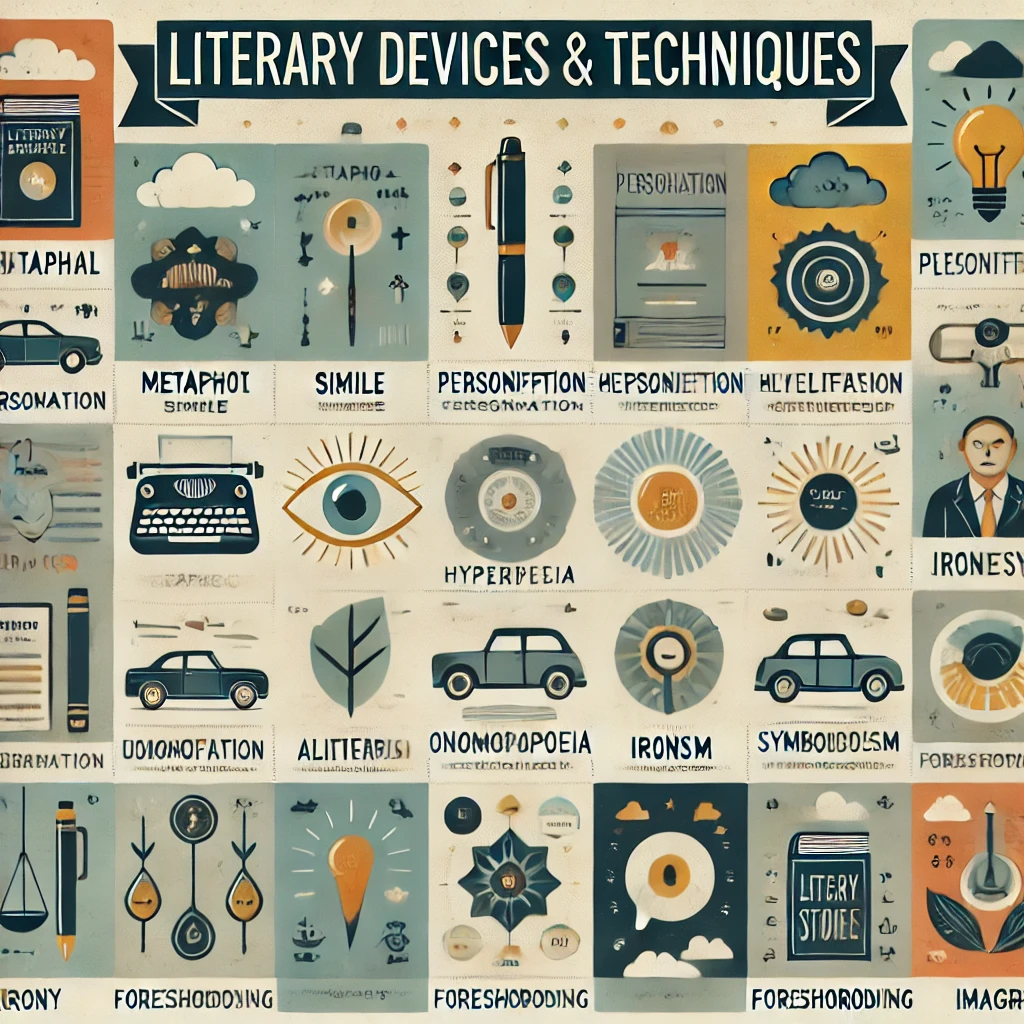Discover essential insights into English literature and grammar, covering timeless literary elements, grammar tips, and language mastery techniques.
Links.
History of English Literature.
Genres in English Literature
Major Literary Movements and Periods
Literary Devices and Techniques
Famous Authors and Poets
Analysis of Key Literary Works
Literary Criticism and Theory
Poetry Analysis and Interpretation
Elements of Drama and Play Analysis
Literature and Society
World Literature in English Translation
Contemporary Literature
Literature in Adaptation

English Literature: A Comprehensive Overview of Key Topics, Periods, and Authors
Introduction
English literature has been a cornerstone of cultural, historical, and intellectual study for centuries. This guide explores key topics in English literature, from its origins and genres to famous authors and critical analysis. Whether you’re a student or literature enthusiast, this overview provides the foundations for a deeper understanding of English literary tradition.
History of English Literature
Understanding English literature begins with a look at its historical evolution. Each period reflects the social, political, and cultural transformations of its time.
Old English Period (450–1066): Known for epic poetry like Beowulf, this period includes heroic and religious themes.
Middle English Period (1066–1500): Chaucer’s The Canterbury Tales exemplifies this era’s focus on social diversity.
Renaissance and Elizabethan Period (1500–1660): William Shakespeare and Christopher Marlowe flourished in this golden age of drama and poetry.
Neoclassical Period (1660–1798): This period emphasizes order, reason, and wit, as seen in works by Alexander Pope and Jonathan Swift.
Romantic Period (1798–1837): Marked by emotion and nature, writers like Wordsworth and Byron redefined poetry.
Victorian Period (1837–1901): Reflecting industrialization and social change, authors like Dickens and the Brontë sisters created iconic novels.
Modern and Postmodern Periods (1901–Present): Experimentation and new narrative forms dominate, seen in works by Woolf, Eliot, and Joyce.
Analysis of Key Literary Works
Some works are essential reading due to their cultural impact and thematic richness.
Shakespeare’s Hamlet and Macbeth: Both explore themes of ambition, power, and fate.
Chaucer’s The Canterbury Tales: Offers a snapshot of medieval society through varied characters.
Austen’s Pride and Prejudice: A commentary on social class and romance.
Woolf’s Mrs. Dalloway: Explores mental health, identity, and post-war society.
Genres in English Literature

English literature spans multiple genres, each offering unique ways to tell stories and convey themes.
Poetry: Ranges from epic and narrative poetry to the structured sonnet and free verse, known for its rhythmic and expressive language.
Drama: Encompasses tragedy, comedy, and historical plays, with playwrights like Shakespeare and Oscar Wilde shaping the genre.
Novel: Including gothic, realism, and naturalism, novels became a major form in the 18th century and remain central to literature.
Short Stories and Essays: Compact and focused, these genres provide snapshots of human experience and social commentary.
Literary Criticism and Theory
Literary criticism helps readers interpret and analyze texts through different perspectives.
Formalism and New Criticism: Focus on the text itself, examining structure and language.
Marxist Theory: Analyzes class struggles and power structures within literature.
Feminist Theory: Examines gender roles, representation, and patriarchy.
Psychoanalytic Theory: Explores subconscious motivations and symbolism.
Psychoanalytic Theory: Explores subconscious motivations and symbolism.
Postcolonial Theory: Looks at themes of colonization, identity, and cultural conflict.
Major Literary Movements and Periods
Literary movements reflect shifts in thinking and creativity, impacting the structure, themes, and style of literature.
Renaissance: A revival of classical knowledge with works that celebrate humanism and creativity.
Romanticism: Emphasis on individuality, nature, and imagination.
Realism and Naturalism: Focus on social issues and the human condition, rejecting idealism.
Modernism: Breaks from tradition with experimental techniques, addressing alienation and existential themes.
Postmodernism: Challenges boundaries, blending genres and questioning reality.
Literary Devices and Techniques
Literary devices enrich texts and help convey deeper meaning. Here are some key techniques:
Metaphor and Simile: Compare different ideas for emphasis and imagery.
Irony and Satire: Highlight human flaws or critique society.
Imagery and Symbolism: Create vivid mental images and represent ideas.
Foreshadowing and Flashbacks: Build suspense and provide context.
Themes and Motifs: Central ideas that recur throughout a text, such as love, betrayal, or redemption.

Famous Authors and Poets
Certain writers have become synonymous with English literature, their works forming the backbone of literary study.
William Shakespeare: His plays and sonnets explore universal themes of love, ambition, and tragedy.
Geoffrey Chaucer: Often called the father of English literature, known for The Canterbury Tales.
Jane Austen: Wrote classic novels on love, society, and morality, including Pride and Prejudice.
Charles Dickens: His novels capture the Victorian era and its social struggles, like in A Tale of Two Cities.
Virginia Woolf: A pioneer of modernist writing, known for Mrs. Dalloway and her stream-of-consciousness style.